“What we call the beginning is often the end. And to make an end is to make a beginning. The end is where we start from.” – T. S. Eliot
“We must walk consciously only part way toward our goal, and then leap in the dark to our success.” – Henry David Thoreau
Last January, when I interviewed the Finnish artist Miina Äkkijyrkkä, I asked if she had advice for young artists. She laughed. In fact she may have even scoffed. To quote Äkkijyrkkä, “There is no recipe for being an artist.” It’s true: there is no recipe for being an artist—there are recipes.
How emerging artists concoct their own recipes for success is the subject of this new column, Praxis Makes Perfect. It will be written by artists, for artists, especially those who have recently graduated from a master’s program (or other equivalent programs in academic settings). Shedding the skin of academia is a taxing and humbling process. It can even be painful. I know.
Once upon a time, I painted all day and all night for two years. Then I graduated. After Cranbrook, I went to Finland on a Fulbright grant. I returned to the humidity of the American southeast this past June where I spent the summer months dithering over my “Future.” By September, having thawed from my time in the Nordic corner of the world, I found myself in New York City with a full time administrative assistant job at a law firm and a studio. I have only begun to cut and paste small pieces into the fluid collage of my new life as a professional artist.
If I stop to think about it, how anyone composes a life as an artist baffles me. Often I give little import to the specifics of how it will work, it just will. It must. Thus the end of my career as a student is the unspooling of a new yarn and a new column for this site. This column will show how we, as artists, uncover the unclear image of our futures, beginning with the works and words of other artists. The following quotes are from a baker’s dozen of recent MFA graduates from around the country, reflecting on the period of transition from academia to professionalism—the perfection of praxis.
Without further ado…
[vimeo:https://vimeo.com/24375936]
Amanda Long, Dharma Talks, 2009, two channel video sculpture.
“Being a young artist in NYC is a bit like being a snowball rolling down a hill–you start small and you very quickly get bigger and faster. My advice to anyone transitioning from school to the city is to surround yourself with other artists. Apply to as many things as possible. Stay active in showing work and do it yourself if no gallery or museum is interested yet. Any show is better than none. Presently I live and work in Exile (an artist in residence “AIR” building) in Long Island City. My plans for the future are to keep applying for larger opportunities, to keep making new work, and to find a decent job.” – Amanda Long, MFA, Carnegie Mellon University (2010)
“I have just finished my MFA this past May. By June I had packed my studio and apartment and moved it to Boston, Massachusetts. Pittsburgh is a great town, but it can be difficult place to find employment in an art-related field. Boston, the place where I attended undergraduate school, is a familiar place for me and is a good city to find work and maintain my studio practice. I hope to find work as a professor in the near future, but currently, I am working as an installer and art-handler at a couple of New England institutions. I am making work out of my home, but I expect to find a studio later this fall.” – N. Sean Glover, MFA, Carnegie Mellon (2011)
[vimeo:https://vimeo.com/29356474]
Ely Kim, Not Into Asian, video, 2011.
“My background is in graphic design and I worked for a number of years before going back to school for my MFA. As I finished grad school and entered the real world, I knew the realities of needing to work to get to make my own work. I have found it best to be flexible in the definition of my practice. Being hired as an art director, designer, or director allow me to also remain an artist, dancer, and healer. I am reiki certified.” – Ely Kim, MFA, Yale (2010)
“Having recently returned to the Capital area after living abroad, trying to reintegrate into the art scene has been a homecoming of sorts. I am happily pursuing new opportunities and wrapping up a few loose ends from before I left. I am ready to start working in a different direction. I feel there is promise and potential in my practice and I am cautiously enthusiastic about a new track developing in my studio.” — Christian Benefiel, MFA, University of Maryland (2008)
“As I am now a year and a half out of graduate school, I find the information I gained in those two years at Columbia continually becoming clearer and more applicable to my practice. It was wonderful to realize that graduate school is really just the beginning.” – Christi Birchfield, MFA, Columbia University School of the Arts (2010)
“I never felt like I was outside of reality in my program–certainly not to the degree that I do now as a fellow at the American Academy in Rome. Not understanding the language here does make me feel like a resident of a parallel world!” — Mary Reid Kelley, MFA, Yale (2009)
“Re-entering ‘the real world’ was about managing expectations and understanding that never again would I have the quantity of rigorous studio discussions that I had during my time at Columbia. Life after my MFA has slowly opened up in pleasant ways. Relief gave way to depression which in turn gave way to practicality and finally some peace. First I wanted not to work at all, then I wanted to produce but felt blocked, but I finally started making new work again. I’m still living in New York, teaching undergraduate photography and building a communal analog darkroom with a former colleague.” – Johanna Wolfe, MFA, Columbia University School of the Arts (2010)
[vimeo:https://vimeo.com/29549128]
“My professor’s advice for my first show out of grad school was, ‘Go for it, you don’t get many chances.’ So I decided to ship myself 2,000 miles, over 7 days, while locked in a crate and playing an online game. I sent a press release to four websites and within a few hours, I was starring down the barrel at 200,000 hits on my website every few hours. I was now looking at the potential of failure on a massive scale. Fortunately, the show was a success. I took a risk and now I have opportunities I would not have had if I had not been willing to fail. I’m not there yet but as long as I don’t keel over dead, I’ll keep plugging away.” – Jordan Wayne Long, MFA, Cranbrook Academy of Art (2011)
“Leaving grad school has been about coming back down to earth. Living life, making money, and finding time to create and promote my art is constantly a balancing act. Keeping up with my grad school community through online communication and reading art blogs has been key to staying current with the contemporary art world. After graduating I interned at Virginia MOCA. I learned so much about art education and all the work that goes into running a museum. Now I work as an adjunct drawing professor and just had my first solo show since graduation.” — Robin Walker, MFA, Cranbrook Academy of Art (2010)
“I took five years off between undergraduate and graduate school, so the transition into workday life has been quite easy. I work for Sarah Sze, and have been there for over five years. I applied to a bunch of free space programs last winter and was lucky enough to get a yearlong residency space at the Abrons Art Center/ Henry Street Settlement. They have ceramics facilities and a great program that brings in curators and critics to visit the artists in residence. I’m amongst very talented people. The hardest thing is finding enough time in the studio and keeping in touch with all my wonderful friends and colleagues from Columbia. I keep applying for opportunities to show, and recently was invited to participate in the Guest Artist Exhibition Series at Vox Populi in Philadelphia.” – Brie Ruais, MFA, Columbia University School of the Arts (2011)
“In May, after receiving my MFA in painting from Yale I moved to New York City. I’m excited to be back in such a busy place. The fast pace of the city is much different than life at school but I find it motivating to be around so much energy here. I have a studio in West SoHo and I’m working on a new group of paintings and sculptures. My work will be featured in a group show in October at Number 35 Gallery.” – Brendan Clark Smith, MFA, Yale (2011)
“Since graduating I have been working with themes of strength and stamina (such as that required to continually make artwork, apply for residencies, earn money for rent, etc.) in relationship to chance, fallibility, and elements in life that cannot be controlled.” – Lauren Ruth, MFA, Cranbrook Academy of Art (2010)

Joy Holland. Installation at UCLA Broad Art Center outdoor seating area and walkway, Los Angeles, California, 2008. Project Management and Facilitation: UCLA (Department of Art, concrete floor cast from salvaged lumber and tree fragments, 2,400 square feet).
“After I completed my MFA thesis, my work increasingly involved architecture and design. I continue to collaborate and learn about environmentally sustainable design practices. Currently I am in Milan, Italy, on a U.S. Fulbright grant, developing a public art installation. This began while I was researching vacant urban spaces in industrialized Italian cities that are being converted into areas for public use, becoming open fields of investigation and human interaction. This has inspired me to challenge my own approach to site planning, design development and community involvement. ” – Joy Holland, MFA, University of California, Los Angeles (2008)
All images are courtesy of the artists.

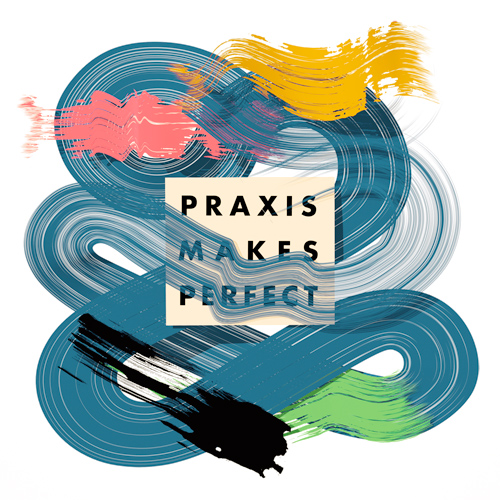
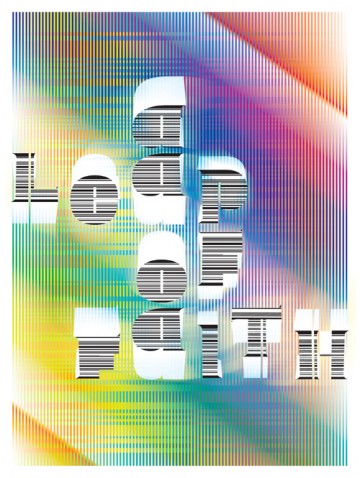
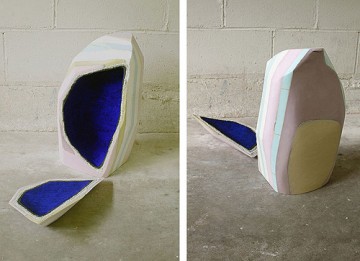
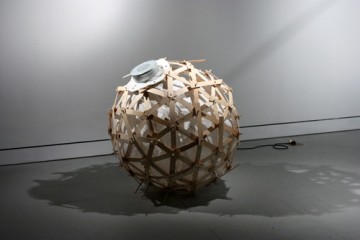
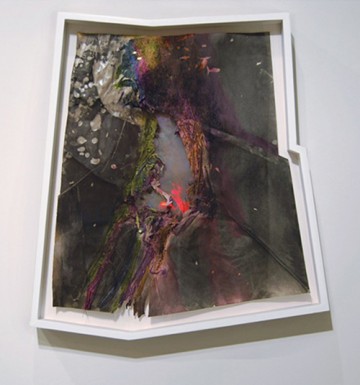


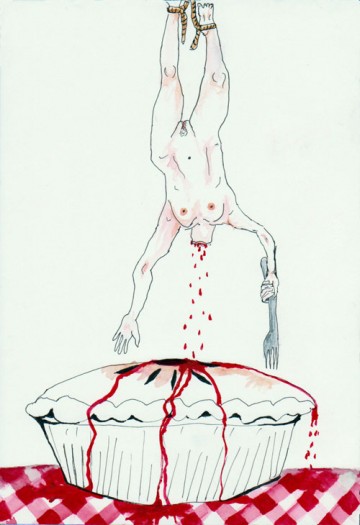
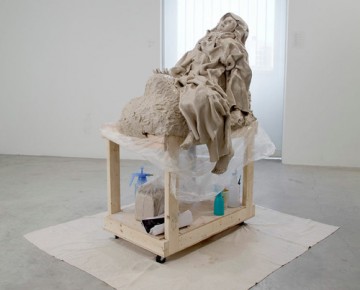
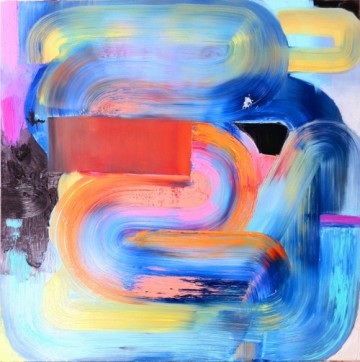
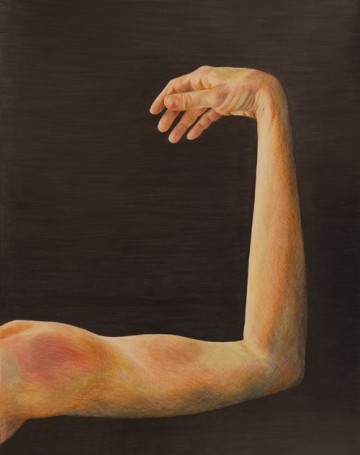



Pingback: End-troducing | Praxis Makes Perfect « hellosinki!